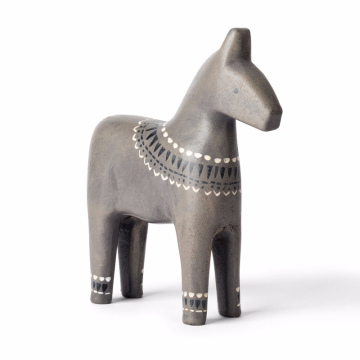Introduction to Spain's Culinary Landscape
Spain's culinary landscape is a vibrant tapestry woven from centuries of history, regional diversity, and cultural fusion. Each region boasts its own specialties, reflecting the local geography, climate, and traditions. From the seafood-rich coasts of Galicia to the hearty stews of Andalusia, the breadth of flavors and techniques found across Spain is remarkable. Spanish cuisine invites the exploration of myriad ingredients—from the renowned olive oil to the famed Jamón Ibérico—each telling a story of its origin and production. This variety is further enhanced by local festivals and food markets that celebrate age-old traditions and seasonal ingredients.
Beyond traditional offerings, Spain is renowned for its innovative culinary techniques, often spearheaded by one of the country’s celebrated chefs. Prominent figures such as Ferran Adrià and José Andrés have played a pivotal role in elevating Spanish cuisine to a global stage, marrying traditional flavors with avant-garde approaches. Their establishments emphasize the importance of culinary artistry, creativity, and the use of high-quality, locally-sourced ingredients, allowing for genuine flavors that resonate with patrons both in Spain and worldwide.
The fusion of modern and traditional cuisines extends beyond techniques; it encapsulates an ethos of seasonal dining, where menus reflect the best of what local producers have to offer. This dedication to sourcing from nearby farms not only supports local economies but also ensures that each dish served is as fresh as possible. As Spain’s culinary recognition continues to rise, with elite restaurants gaining accolades and Michelin stars, the nation remains a focal point for food enthusiasts eager to experience extraordinary culinary adventures. Through this exploration of Spain’s elite restaurants, one uncovers the heart of a nation that passionately regards food as an integral part of its culture and identity.
Top Elite Restaurants in Spain
Spain is renowned for its rich culinary heritage, having produced a myriad of elite restaurants that reflect the country's diverse food culture. One of the most celebrated establishments is El Celler de Can Roca in Girona, which boasts three Michelin stars. Founded in 1986 by the Roca brothers, the restaurant is known for its innovative approach to traditional Catalan cuisine. The culinary philosophy here revolves around the idea of creating a harmonious blend of flavors, textures, and presentations that excite the palate. Signature dishes include the famous "Siren's Fish" and "Pork with Caramelized Egg Yolks," both showcasing the chefs' impeccable attention to detail and creativity.
Another noteworthy establishment is DiverXO, led by the avant-garde chef David Muñoz. Located in Madrid, DiverXO is Spain’s only restaurant to hold three Michelin stars. The menu offers a unique fusion of Asian and Spanish cuisines, emphasizing bold flavors and unexpected combinations. The dining experience is theatrical, with dishes such as "Spicy Peking Duck" served in an intricate display that is as much about visual appeal as it is about taste. The ambiance at DiverXO is vibrant and eclectic, complementing the innovative culinary offerings.
Additionally, Asador Etxebarri in Axpe has garnered acclaim for its exceptional wood-grilled dishes. The restaurant prides itself on using local ingredients and artisanal techniques to amplify the natural flavors. Chef Victor Arguinzoniz's philosophy centers on simplicity, allowing the ingredients to shine. Signature offerings like the grilled langoustine and the infamous steak cooked over an open flame are indicative of this ethos. Customers are treated to an authentic experience that merges rustic charm with culinary excellence.
These elite restaurants epitomize Spain's culinary adventure, each contributing uniquely to the rich tapestry of the nation's dining scene. They not only highlight exceptional cooking but also offer immersive experiences that elevate the art of dining.
Culinary Trends and Innovations
Spain's elite dining scene is continuously evolving, driven by innovative culinary trends that attract both local and international patrons. One of the most notable movements reshaping the gastronomic landscape is molecular gastronomy. This avant-garde approach employs scientific principles to create unique textures and flavors, allowing chefs to transform traditional dishes into extraordinary culinary experiences. Chefs are using techniques such as spherification and gelification to craft visually stunning presentations that tantalize the palate and engage the senses, elevating Spanish cuisine to new heights.
Another key trend in Spain's elite restaurants is the increasing focus on sustainability. With environmental issues becoming more pressing, chefs are adopting practices that prioritize local sourcing and organic ingredients. Restaurateurs are forging strong partnerships with local farmers and artisans to ensure their menus reflect seasonal produce and traditional methods. This commitment to sustainability not only supports local economies but also reduces carbon footprints, allowing diners to enjoy meals that are both delicious and environmentally responsible.
In addition to sustainability, the integration of technology into the culinary arts is transforming the dining experience. From advanced reservation systems to interactive menus, technology is enhancing customer engagement and streamlining operations. Many elite restaurants are now employing innovative cooking equipment and digital tools, allowing chefs to refine their techniques and push creative boundaries. Moreover, social media platforms have given rise to new culinary concepts, encouraging chefs to experiment with fusion dishes and modern interpretations of classic Spanish recipes.
Furthermore, Spanish chefs are reimagining traditional ingredients, bringing a fresh perspective to beloved dishes. They are experimenting with unexpected flavor combinations and cooking techniques, creating a dynamic dining experience that excites food enthusiasts globally. This willingness to innovate, while honoring culinary heritage, exemplifies the ongoing evolution of Spain's elite restaurants and reflects a vibrant culinary landscape that continues to inspire and delight.
Planning Your Culinary Journey
Embarking on a culinary adventure through Spain's elite restaurants can be an exciting yet overwhelming experience. Careful planning is essential to fully enjoy the vast array of flavors, dishes, and dining styles that Spain has to offer. To ensure a smooth gastronomic journey, travelers should consider a few practical tips.
First and foremost, making reservations well in advance is crucial. Popular restaurants, especially those with Michelin stars, often have a long waiting list. Booking a table several weeks or even months beforehand will ensure that you secure a spot at these renowned establishments. Many restaurants also offer online booking services, making it easier to plan your visits.
When dining at elite restaurants, understanding the concept of tasting menus can enhance your experience. These menus typically feature multiple courses, allowing you to sample a variety of dishes prepared by the chef. Be aware of any dietary restrictions and communicate these to the restaurant in advance to ensure a tailored experience. Tasting menus often showcase seasonal ingredients and unique culinary techniques that reflect the region’s gastronomic culture.
Next, pay attention to dress codes that may vary from one establishment to another. While some venues maintain a casual ambiance, others may require formal attire. Research the restaurant's dress code beforehand to ensure you are appropriately dressed, as this contributes to the overall dining experience.
Dining etiquette is another important aspect to consider. Familiarize yourself with local customs, such as how to properly enjoy tapas or when to engage with the staff. This cultural awareness not only enhances your experience but also demonstrates respect for Spanish traditions.
To help plan your culinary route, consider a sample itinerary that includes essential dishes, local food festivals, and authentic experiences. For instance, start in Barcelona with a seafood paella, then journey to San Sebastián for pintxos at the bustling local bars. Include stops at seasonal food festivals to experience the vibrancy of Spanish cuisine while introducing you to local artisans and chefs.
By thoughtfully planning each detail of your culinary journey, you will create unforgettable memories while savoring the exquisite culinary landscape that Spain has to offer.








